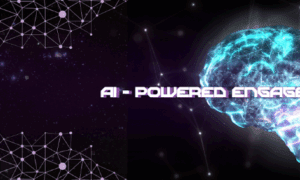A storm raging inside your head, with no one around to see the chaos. You might think of OCD as someone scrubbing their hands raw or flipping light switches over and over. But Pure O OCD hides in plain sight. It strikes without those obvious moves. People with this form battle fierce, unwanted thoughts that trap them in a cycle of doubt and fear. These intrusive thoughts feel real and scary, yet they stay locked inside.
Pure O, short for Purely Obsessional OCD, focuses on mental battles rather than physical ones. You get hit with obsessions that demand attention, but your responses happen in your mind. This article breaks it down. We’ll cover what Pure O OCD really means, its signs, and solid ways to treat it. If you’re dealing with intrusive thoughts or mental compulsions, you’ll find clear steps toward relief. Let’s dive in and shine light on this hidden struggle.
Section 1: Defining Pure O OCD – More Than Just Worry
What Makes Pure O Different from Typical OCD?
Classic OCD often shows up in actions you can spot. Think hand washing until skin cracks or checking locks a dozen times. Pure O OCD flips that script. It lives mostly in your thoughts. No big rituals for others to notice.
People with Pure O know their worries don’t make sense. These thoughts clash with who they are. That’s ego-dystonic, meaning they feel foreign and wrong. Yet the brain won’t let go. This inner fight can hit harder than outward habits. Sufferers hide it well, so the pain festers in secret. It drains energy just as much as visible compulsions do.
Studies show up to 25% of OCD cases fit this Pure O pattern. It’s not less serious. The lack of outward signs just makes it tougher to spot and address.
The Cognitive Core: Obsessions and Intrusive Thoughts
At its heart, Pure O OCD spins around obsessions. These are thoughts that barge in uninvited. They spark deep fear or shame. Common types include harm OCD, where you dread hurting yourself or loved ones. Sexual obsessions, like POCD or SO-OCD, question your attractions in ways that horrify you.
Then there’s religious OCD, or scrupulosity, with endless guilt over sins. Existential doubts or relationship obsessions, known as ROCD, make you question your whole life or bond with a partner. The theme matters less than how it grips you. That rush of panic? It demands you fix it right now.
Picture a doubt as a sticky note plastered on your brain. You try to peel it off, but it multiplies. Intrusive thoughts in Pure O OCD aren’t about what you want. They’re the brain’s glitch, firing false alarms. Reaction is key—the fear and urge to push them away keep the cycle alive.
Mental Compulsions: The Invisible Rituals
Mental compulsions are the sneaky part of Pure O. They’re not hand-wringing; they’re mind games. You might replay a memory to prove you’re not a bad person. Or check your feelings over and over to ease the doubt.
Other examples include whispering prayers in your head or picturing the opposite of the scary thought. Thought blocking tries to shove the obsession out. These acts feel like relief, but they trap you deeper. They tell your brain the thought needs handling.
Why do they stick? They act as safety nets. Each one reinforces the fear. Over time, obsessions grow stronger. Breaking free means spotting these hidden habits first.
Section 2: Recognizing the Signs – Symptoms and Impact of Pure O
Common Symptom Clusters in Pure O Sufferers
Pure O symptoms hit like waves of dread. An intrusive thought pops up, and anxiety shoots through the roof. You ruminate for hours, turning it over in your mind. Thoughts feel like poison, tainting your sense of self.
Self-blame piles on. You beat yourself up for even having the idea. Moral distress eats at you, as if you’re guilty just for thinking it. Many hide this, so diagnosis takes years. One study found average delays of seven years or more.
Spotting these clusters early helps. Extreme doubt after a random thought? Constant mental review? That’s Pure O at work. The side effects of Pure O OCD build quietly but hit hard.
The Role of ‘Just Right’ Sensations and False Sensations
Some folks with Pure O chase a “just right” feeling. A thought won’t leave until it lands perfectly in your head. You repeat it, tweaking words, until it feels complete. This ties into perceptual tricks, like a buzz in your body that screams danger.
These sensations trick you. Your brain craves total sureness, but OCD twists it. Normal uncertainty? No big deal. Here, it amplifies into terror. It’s like your mind’s alarm system gone haywire.
Understanding this helps fight back. Those feelings aren’t truth; they’re OCD’s tools. They exploit your need for control, making every doubt feel huge.
Real-World Consequences of Untreated Pure O
Untreated Pure O OCD seeps into daily life. You pull away from friends to avoid triggers. Work suffers as rumination steals focus. Relationships strain from constant second-guessing.
Self-trust crumbles. You question every choice, big or small. The impact of intrusive thoughts reaches far—sleep vanishes, joy fades. Some face job loss or isolation.
Without help, it worsens. But knowing the signs opens doors to change. Pure O side effects don’t have to define you.
Section 3: Differentiating Pure O from Anxiety Disorders and Rumination
Why Pure O is Not Just Generalized Anxiety or Depression
Generalized anxiety disorder brings broad worries about life. Pure O zeros in on specific, unwanted intrusions. GAD thoughts feel more like your own concerns. Pure O ones? They clash with your values, ego-dystonic to the core.
Depression might add rumination, but without the compulsion drive. In Pure O, you neutralize thoughts with mental acts. GAD lacks that structure. Clinical signs, like the urge to ritualize, set OCD apart.
Ever wonder why your worries loop endlessly? If they’re invasive and demand action, it might be Pure O, not plain anxiety.
The OCD Cycle vs. Normal Worry Cycles
The Pure O loop starts with a trigger. An obsession crashes in, spiking anxiety. You turn to a mental compulsion for quick calm. Relief hits, but the obsession bounces back fiercer.
Normal worry fades on its own. This cycle feeds itself. Each compulsion strengthens the obsession’s hold.
To break a spike, try this: Name the thought out loud. “That’s OCD talking.” Then shift to a simple task, like feeling your feet on the ground. No reviewing—just let it float by.
Section 4: Evidence-Based Treatment for Pure O OCD
Cognitive Behavioral Therapy (CBT) Foundation and Refinement
CBT forms the base for OCD treatment. It targets thought patterns. But standard CBT can backfire in Pure O. Debating the thought’s truth often amps up the fight.
For Pure O, refine it to avoid feeding the beast. Focus on patterns, not content. Therapists adjust to handle internal battles.
This shift makes CBT work better. It builds tools to face fears without endless debate.
Exposure and Response Prevention (ERP) Tailored for Pure O
ERP stands as the gold standard for OCD treatment. It pairs with facing fears head-on. For Pure O, that means cognitive exposures. You deliberately think the scary thought, no escape.
Response prevention blocks mental compulsions. No reviewing or neutralizing. Say your obsession is harm fears. Write a short script: “I might hurt someone by accident.” Read it daily, sit with the discomfort.
Start small. For sexual obsessions, imagine the doubt briefly. Don’t fight it. Over time, anxiety drops. Sessions with an ERP specialist speed results. Studies show 60-80% improvement rates.
Acceptance and Commitment Therapy (ACT) as a Supportive Modality
ACT pairs well with ERP. It teaches defusion—treat thoughts as passing clouds, not facts. You step back, label them: “Just a thought.”
Live by your values, even with discomfort. Committed action means pursuing goals despite intrusions. A therapist trained in OCD ensures it fits.
This combo builds resilience. You reclaim control, not by erasing thoughts, but by choosing your response.
Pharmacological Support
Meds like SSRIs help manage Pure O OCD symptoms. They ease anxiety and cut down intrusive thoughts’ power. Drugs such as fluoxetine or sertraline boost serotonin levels.
They’re not a cure alone. Pair them with therapy for best results. About 40-60% of people see big gains. Talk to a doctor to find the right fit.
Section 5: Living Beyond Intrusions – Recovery and Management Strategies
Embracing Uncertainty: The Ultimate Antidote
Recovery from Pure O hinges on okaying doubt. OCD thrives on your chase for sureness. Drop that hunt. Practice with tiny choices: Pick a meal without rethinking.
Accept the “what if” without acting. The feared thing might happen, slim chance or not. But you don’t need to police every thought. This tolerance starves the cycle.
Over weeks, it gets easier. Your mind quiets as certainty loses its pull.
Building a Strong Support System
Share about Pure O with care. Tell loved ones: “These thoughts aren’t me. They’re OCD noise.” Avoid spilling details that invite reassurance—it acts like a compulsion.
When you crave comfort, pause. Use this script: “I’m in an OCD loop. I need space to let it pass.” Educate them on not feeding the beast.
Support groups or online forums connect you with others. You’re not alone in overcoming intrusive thoughts.
Conclusion: Reclaiming Your Mind from Pure O
Pure O OCD thrives in silence, but knowledge breaks its grip. We’ve unpacked its core: intrusive thoughts and mental compulsions that fuel the fire. Symptoms like rumination and doubt impact life deeply, yet it’s not just anxiety—it’s a distinct cycle.
Treatment shines brightest with ERP, backed by ACT and meds when needed. Embrace uncertainty and lean on support to build lasting change. Pure O treatment success stories prove it: Distress fades, life returns.
You deserve relief. Seek a specialist today. With self-kindness and steps forward, you can quiet the storm and live free. Start your path to overcoming Pure O OCD now.



































